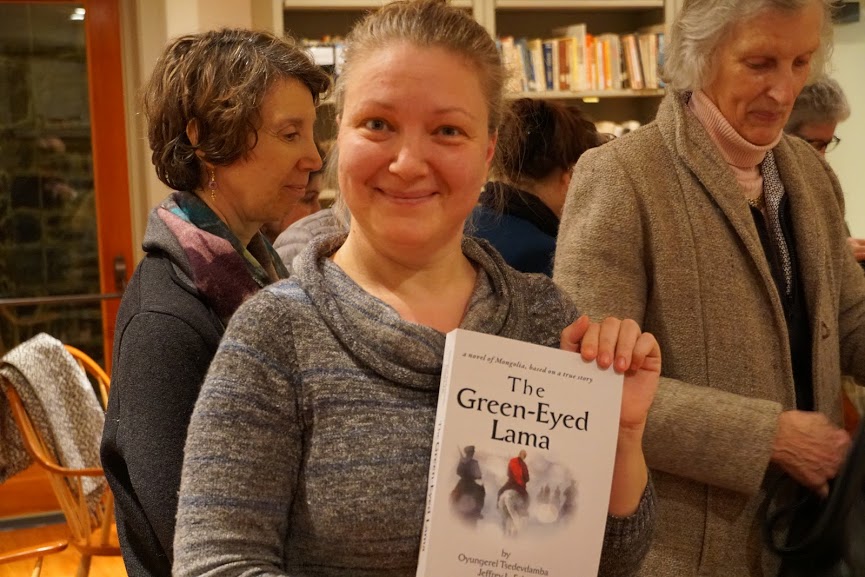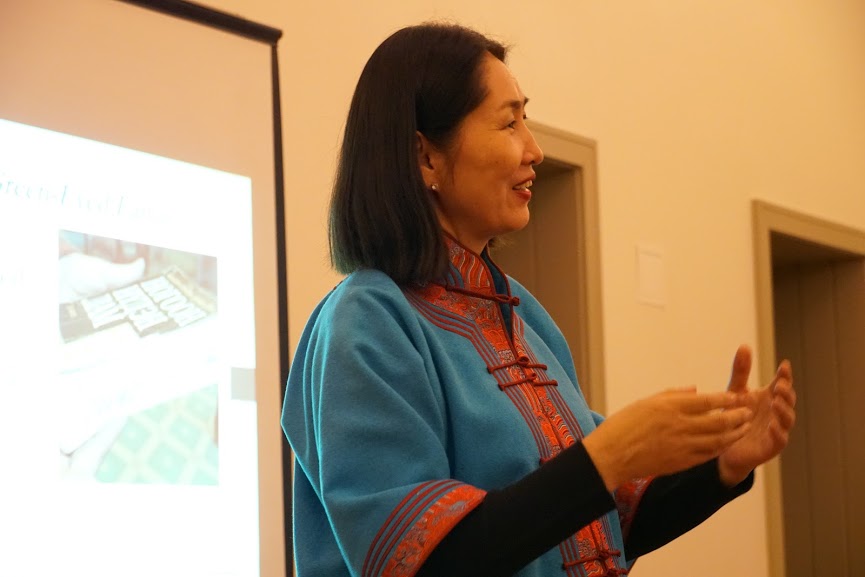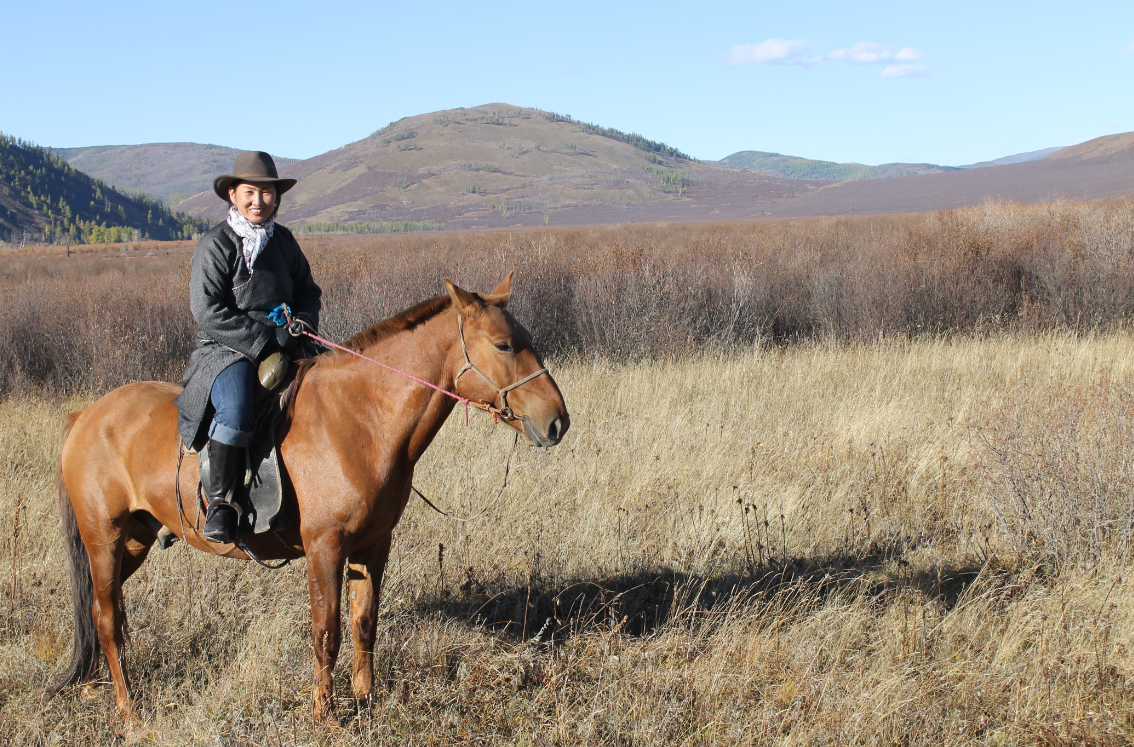One does not usually expect a politician and policymaker to be a breakout novelist, but that is exactly what Oyungerel Tsedevdamba has managed to achieve. Her novel, The Green-Eyed Lama, is for many Mongolians the first novel about Mongolia itself, specifically the Mongolian experience of a particularly painful period: the 1930s purges under Stalin. Ms. Tsedevdamba’s hero is an artist-singer-herdsman that navigates the height of Soviet-led persecution of Mongolian Buddhists.
Ms. Tsedevdamba’s achievements over the decades as a civil servant (she was the Mongolian minister of culture, sports, and tourism from 2012–14 and Member of State Great Khural from 2014–16, among many other responsibilities like presiding over the Democratic Women’s Union from 2010–16) deserve a separate commentary. A driver of policy and a civic leader, she has already written plenty of non-fiction books, from education, work, and culture to infrastructure and travel. But among her proudest and most meaningful projects is this story, whose protagonist is actually based on her great-uncle. She credits her husband, Jeffrey Lester Falt, with encouraging her to follow up this aspiration after she learned about several Buddhist ancestors in her family in 1997.

“My grandmother was a devout Buddhist and I grew up watching her carrying her prayer beads around constantly. When I visited her [in 1997],” Ms. Tsedevdamba told me, “she spoke about her great love, who I previously didn’t know anything about. I chose to write about this man and set to work looking through court records and historical archives, forming a biopic of this grand-uncle of mine through material evidence as well as talking to older generations of Mongolians, many of them of who live in rural areas and have living memories of the Stalinist period. Over time, my story came to be an act of sharing the ordeal of my grandmother’s generation.”

The Green-Eyed Lama, sourced from local stories and tales of the generation of Ms. Tsedevdamba’s grandmother and official records, took a decade to complete and two decades to reach English language market. In 2008, the Mongolian version of the novel was published (although Ms. Tsedevdamba co-wrote the story with Jeffrey Falt in English first), with a French translation released in 2017. The official English version became available on Amazon the following year.
Sadly, her grandmother passed away before she could show her the completed manuscript, but it is a great comfort that she managed to show the book to many Mongolian elders, who wept at being able to finally read a book that reflected their memories and experiences. “Even those who were illiterate asked their younger relatives to read my story to them,” reflects Ms. Tsedevdamba. “One mother with a terminal illness wanted to read The Green-Eyed Lama as her dying wish, and she passed away peacefully after doing so.”

Working with her husband, Ms. Tsedevdamba wrote one more manuscript (so far it is released in Mongolian), which is a sequel to The Green-Eyed Lama. The second book is set immediately after World War Two and the transition from a mixed economy of private and public interests into a planned economy. The Mongolian national story of this period is dominated not only by the Cold War, but also by the purges and impoverishment of entire demographics including religious believers and nomadic herders.
Ms. Tsedevdamba’s stories have been welcomed across Mongolia and the West because they are both intensely personal (in that they are biopics of a real person from her family) but also a broader glimpse into the sociological, cultural, and political context of her grandmother’s Mongolia, which was closely tied to the Soviet Union from 1924 until 1992. The Green-Eyed Lama is therefore not only Ms. Tsedevdamba’s bridge between the personal and the public, but also a bridge between young and old: indeed, the book has been particularly popular among young Mongolians, many of whom are proud to call The Green-Eyed Lama their first novel.
“Our country faces many challenges, but I’m truly optimistic about how young and old Mongolians are learning together and getting involved in helping each other and wider society,” she reflects happily. “For The Green-Eyed Lama to have helped played a part in that is quite special to me.”
See more

